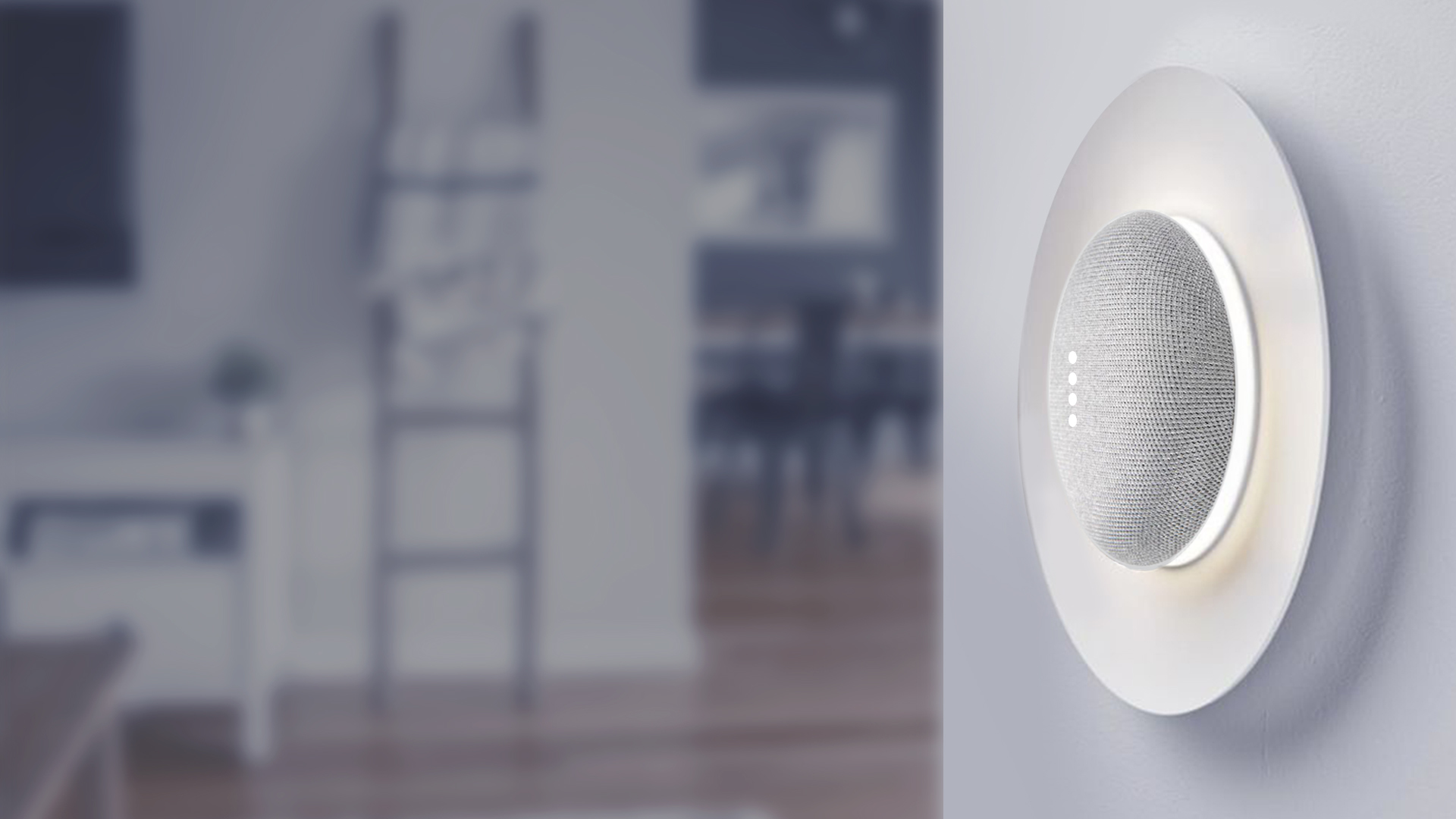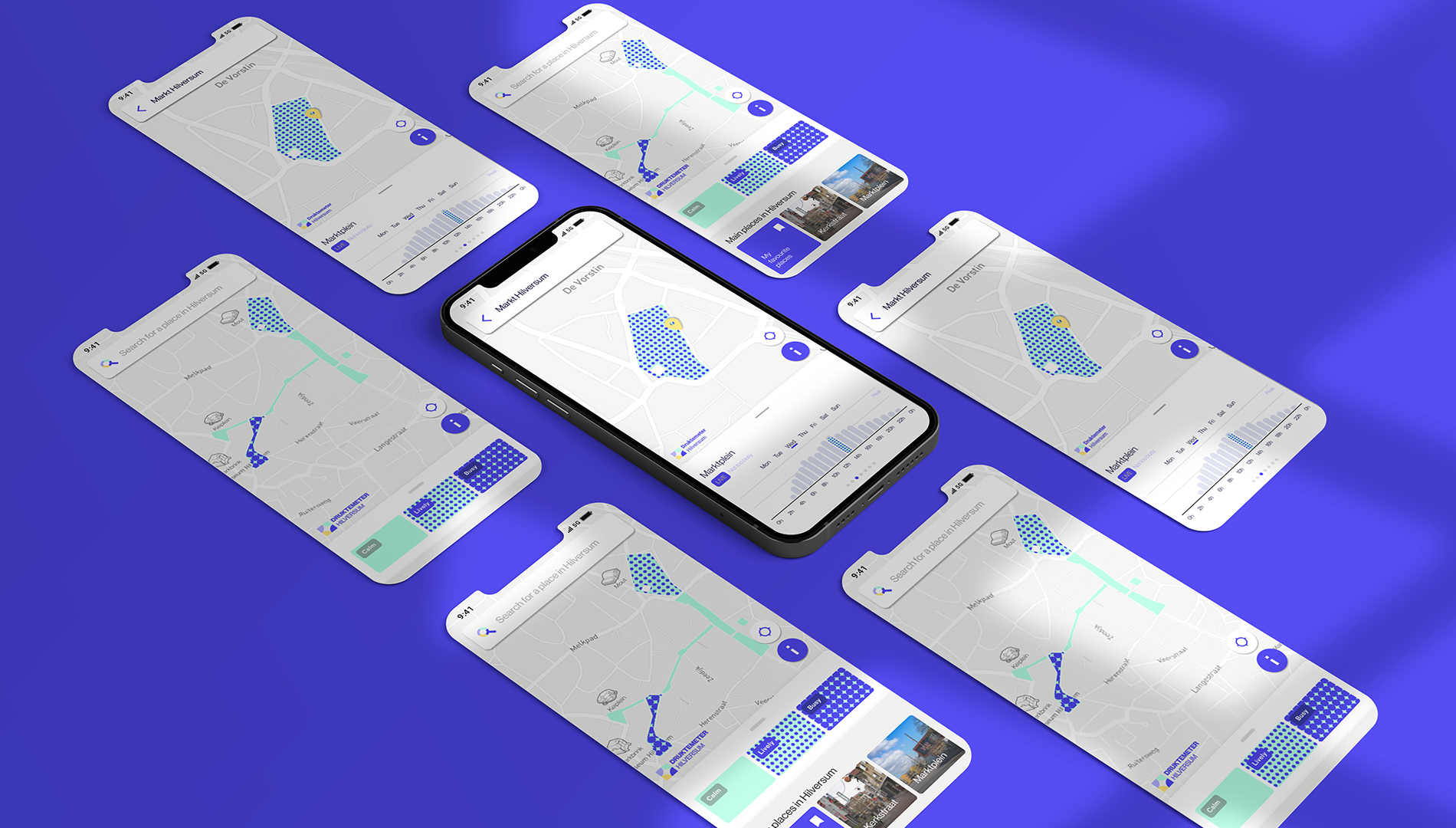AirBuddy
Home is where the office is, and where the bad air circulates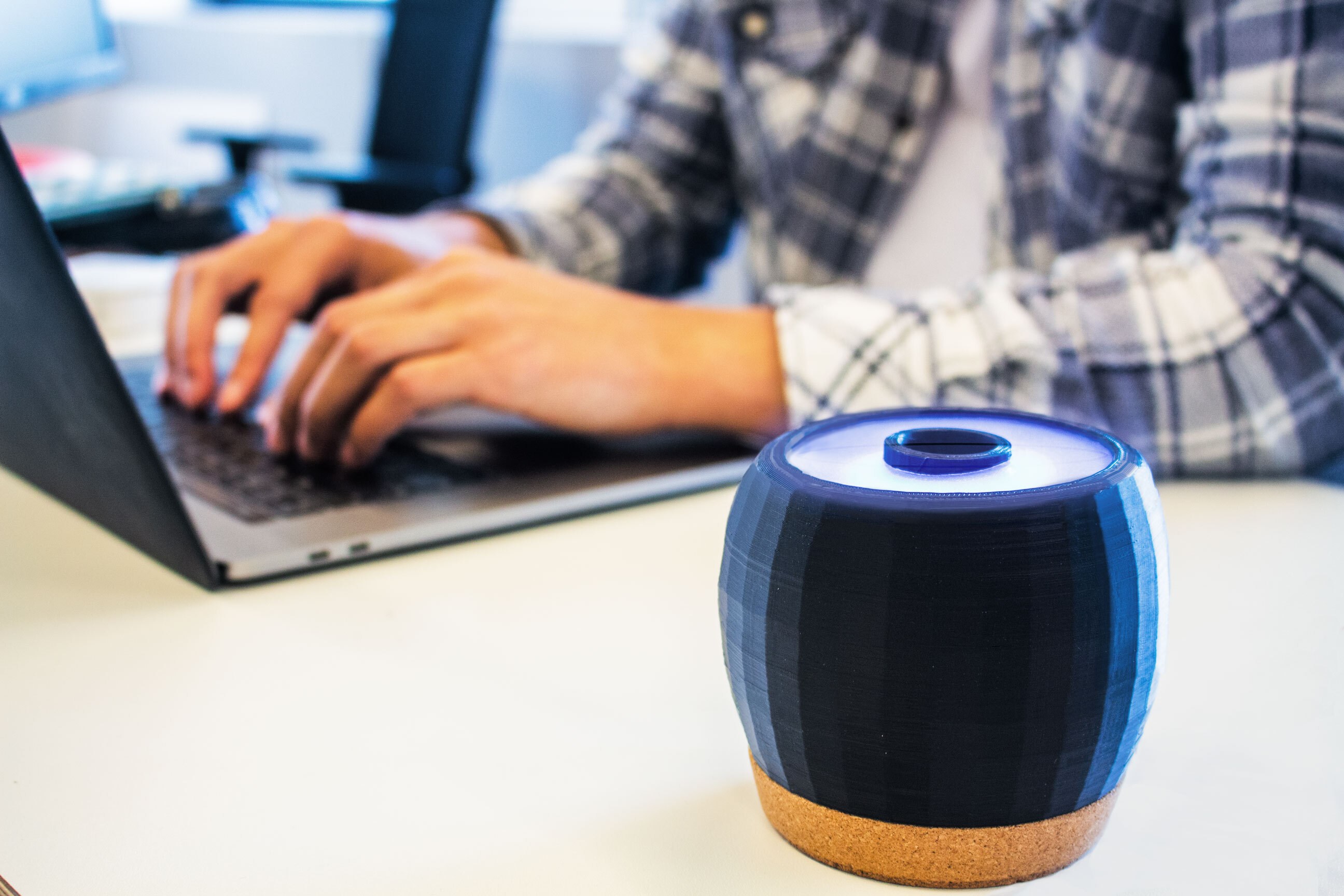
-
Client:
Personal Project
- Team:
-
Disciplines:
Concept
-
Schoolyear:
2020-2021
The pandemic and its restrictions have forced the world to adapt to a new way of living and working. Studying and working from home has become the new standard. Isolation and lack of direct interaction with co-workers can cause a serious increase in loneliness, anxiety, and other mental health problems. But there are other factors that might be less visible, such as indoor air pollution. As design students, we started thinking about a way to use our skills and create something that makes working from home healthier and less lonely too. We introduce you to AirBuddy.
Turning our homes into offices has come with a loaded baggage. Not only must we make extra effort in keeping interaction with our colleagues (albeit online), we have also become responsible for our very own health and safety. Whereas most offices are designed to have a good air circulation system, your home office most likely isn't protected from air pollutants. And why should it? Your home wasn’t meant for you to spend countless hours behind a computer, possibly, confined to a small area of your house or behind closed doors and windows (winters can be unforgiving).
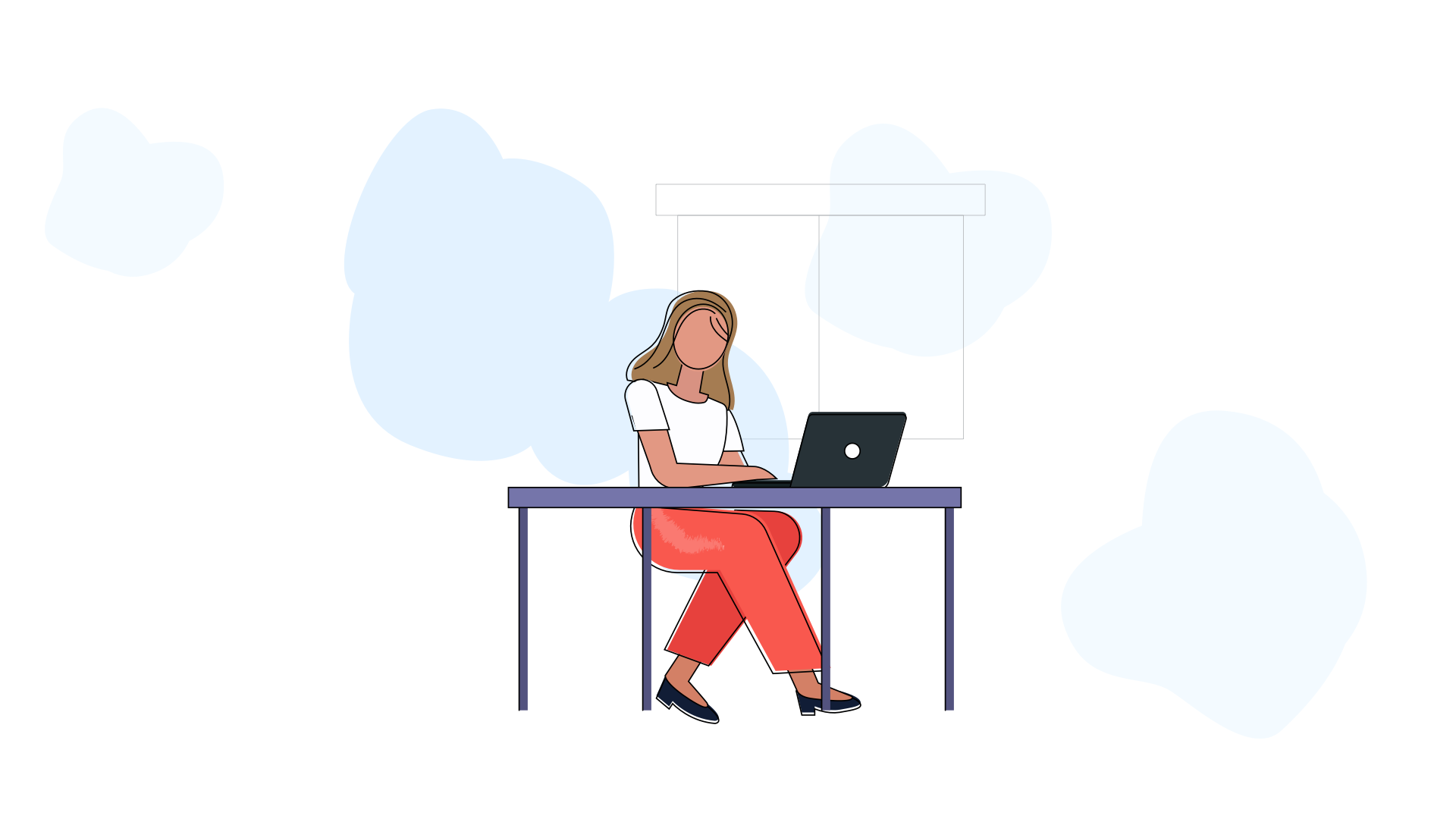
By not circulating the air, we're breathing the same air in and out multiple times. This degrades the quality of the air rapidly. We have experienced how we can get wrapped up in our activities and don't even consider checking our working conditions. Sometimes, we get so absorbed with our screens, that we forget to open a window or take a break and change our environment for a moment.
The invisible danger of indoor air pollution
During the first lockdown, we observed a drop in outdoor air pollution - everyone was at home. Meanwhile, since we're generally spending more time inside, indoor air pollution has increased. Indoor air pollution is an underrated health concern partly because it is so invisible. Heavily polluted outdoor air might cause dark smoke or a toxic smell. This is a lot easier to notice than polluted air indoors as here the pollutants are often hidden behind scents such as those of air fresheners - or recently brewed coffee. What’s worse, poor indoor air quality can increase the risk of many health problems like headaches, dizziness, sore throats, eye irritation, skin rashes, and infections. It can even affect your mental health.
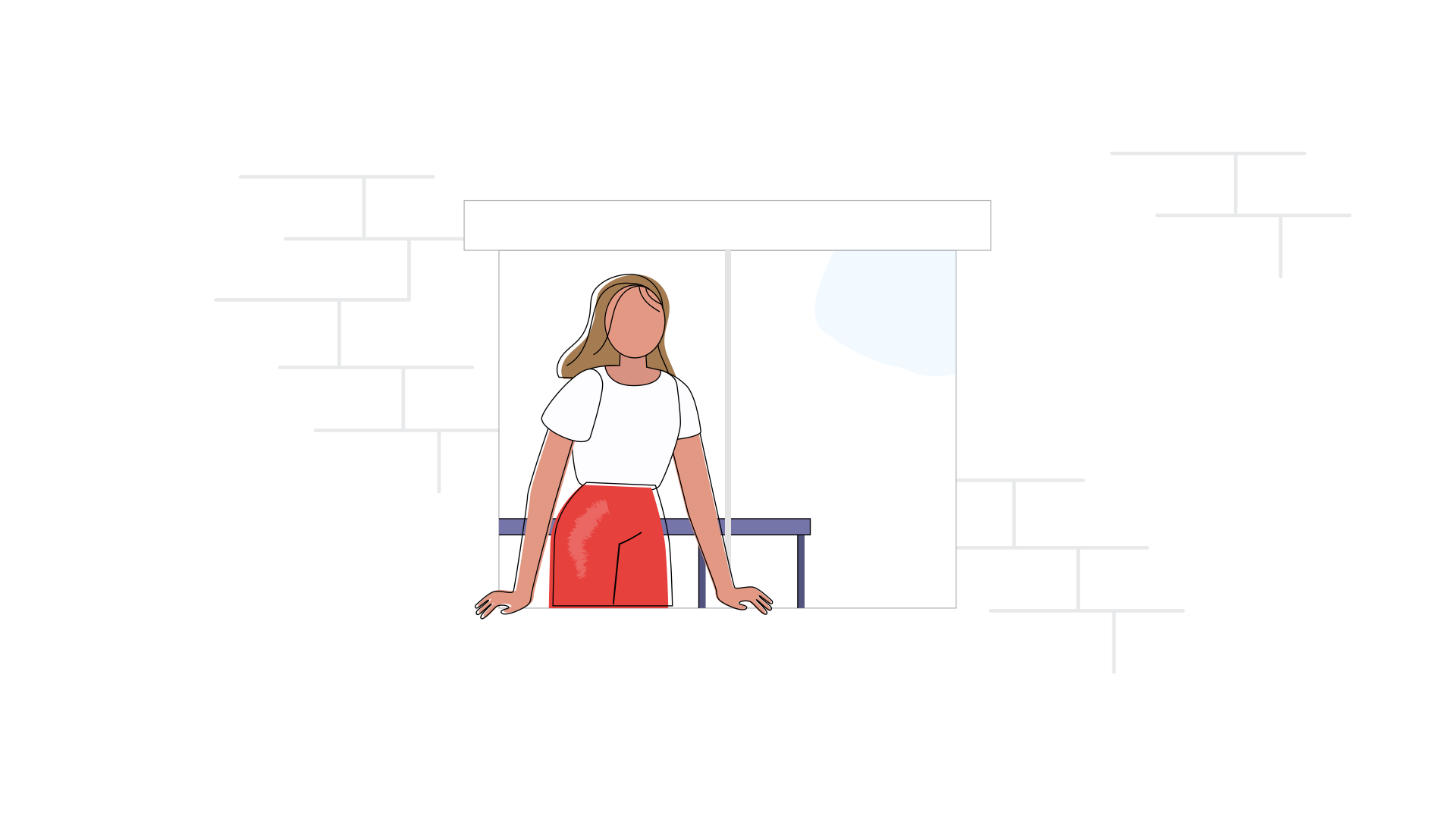
Making it visible (creating AirBuddy)
We designed AirBuddy to help you keep an eye on the quality of the air you breathe. The device measures the air quality in a room and makes it more visible by showing if your air is polluted or not. It is 3D printed and can be placed anywhere in your room.
The AirBuddy consists of an MQ-135 Air Quality Sensor that can detect several kinds of molecules (pollutants) in the air: ammonia, nitrogen oxide, smoke, CO2, and other harmful gasses. The more pollutants there are in the air, the higher the output number. We translated this number into a light output that indicates the quality of air with colours ranging from blue to red. Blue indicates fresh air with few pollutants. Orange or red means there are more pollutants in the air.
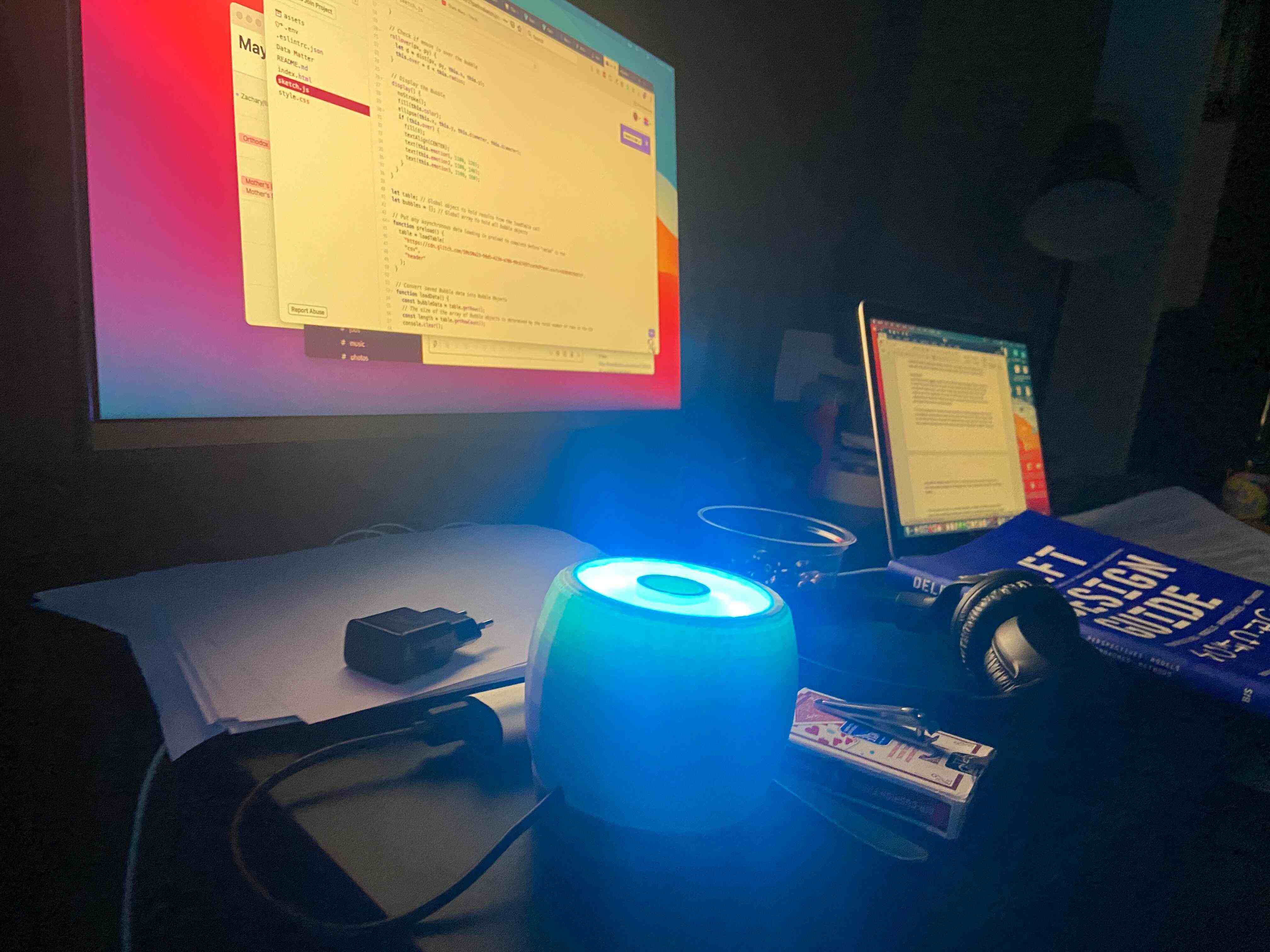
Just Breathe
AirBuddy is not only about indicating good or bad air quality; it also serves as a breathing-buddy.
Another challenge we noticed people are experiencing during the pandemic is dealing with stress and/or anxiety. In a situation of crisis and uncertainty, it is hard to stay calm. Relaxation, meditation, and mindfulness are becoming a part of many people's lives. It is scientifically proven that breathing deeply can reduce stress, speed up recovery from illness, and increase energy and creativity.
There are numerous apps (eg. Headspace, Happify, and MindShift) developed to address mental health. Unfortunately, those solutions are very screen-based. Since our screentime is already so high, we felt obligated to look for a different way of addressing this issue.
When the air quality is good, the light of the AirBuddy outputs a calm breathing rhythm. This calm, wavy motion is supposed to induce the feeling of serenity and bliss. By copying and adopting this breathing pattern, people will feel more relaxed. Whenever the air quality degrades, however, the LED light shines red and starts to breathe more rapidly, indicating stress, and that action is required. Time to go for a walk or open a window.
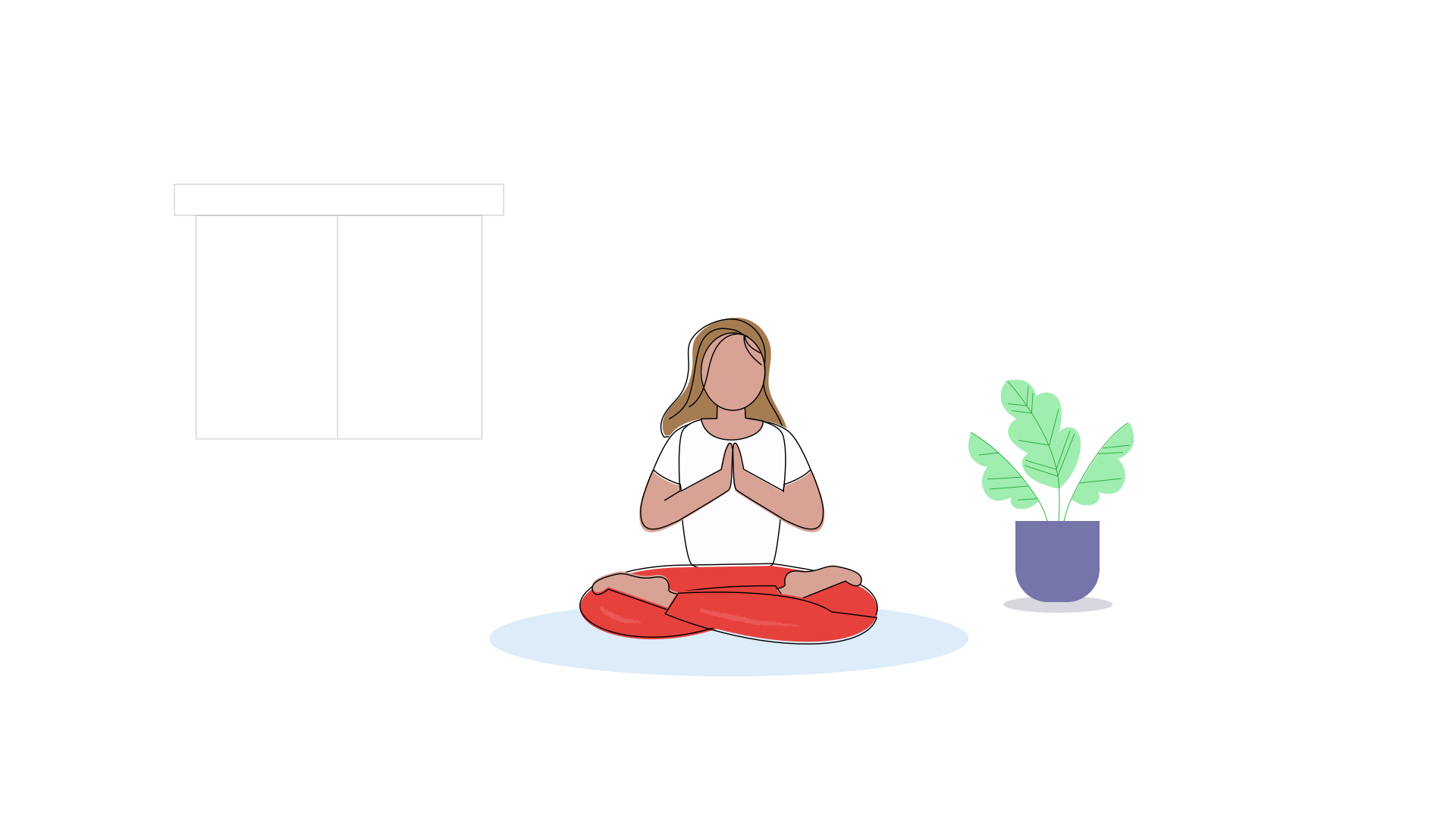
Budding at a distance
Probably the hardest challenge of the pandemic, and working from home, is not being able to interact with colleagues. The mandates of social distancing, self-isolation, and quarantine measures have disconnected us from our social lives. The circumstances make it not easy for people to meet their desires for social connection, interaction, and support with peers, family, and loved ones resulting in loneliness. We had to say goodbye to the coffee corner chats and group lunches.
We experienced ourselves that when feeling lonely or isolated, the support of a friend or peer is highly beneficial. We see a lot of fun and creative initiatives being started to support interaction between colleagues and friends online. In our programme, for example, a student came up with the idea of having coffee-buddies: every day you are paired up with a different student to enjoy a coffee break together. This replaces the informal social contact you would normally have when working at the university or office.
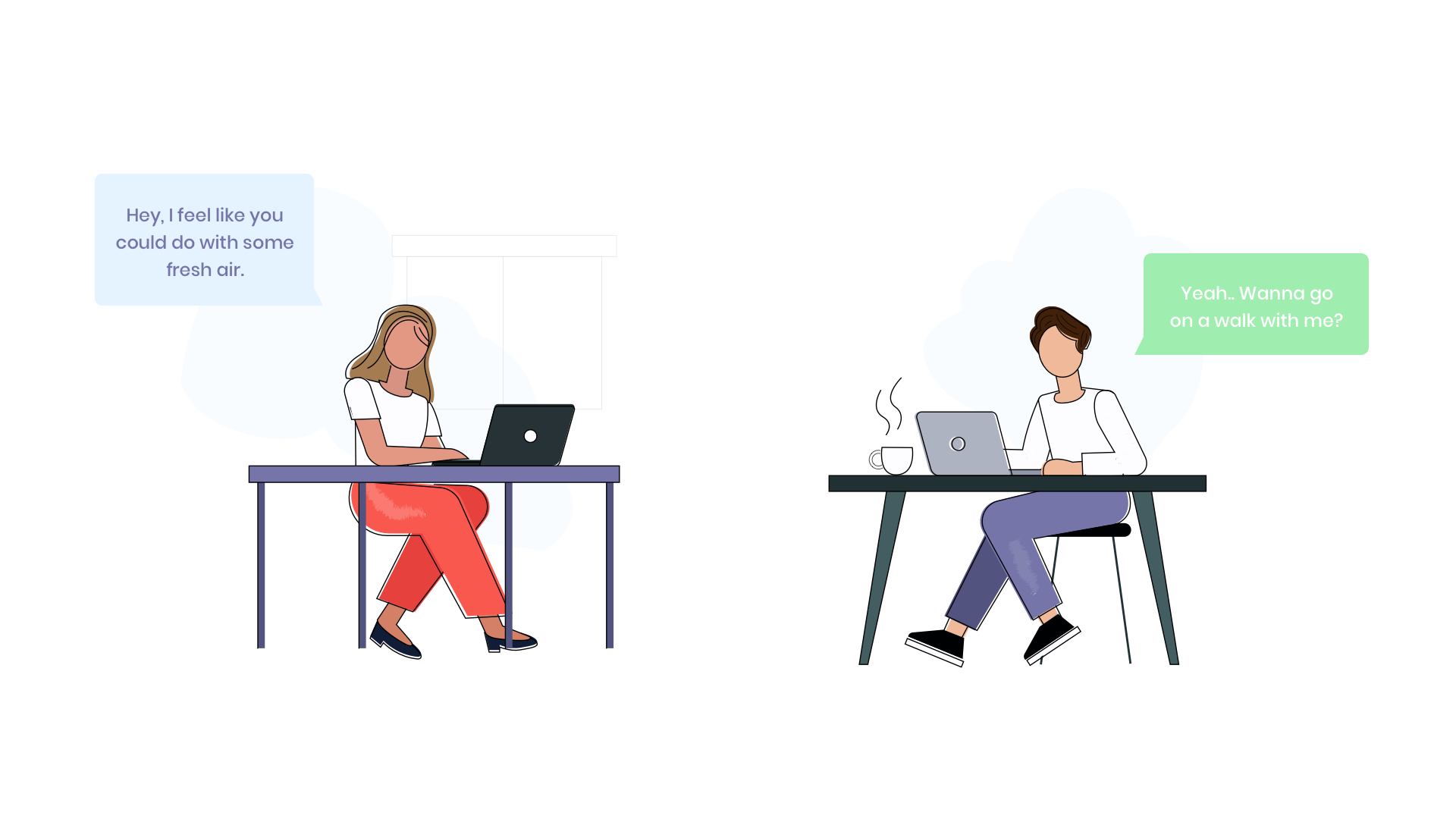
From this notion, we saw an opportunity in including social interaction in our design. We designed AirBuddy in a way that it can act as an interactive system between two people. Every participant has their own device, which are coupled to each other. The connected devices communicate through a data broker. The data collected by the air quality sensor is exchanged with the other device and shows the light output. Therefore, the other person will know whether their buddy’s indoor air quality is good or not. If the air is polluted, they can advise their partner to open a window or go for a walk.
Future ahead
With AirBuddy, we hope to inspire people to maintain a more safe and healthy working environment, even in their own homes. Tracking air quality might only be a minor action, but we believe that it is indirectly related to a bigger picture of both physical and mental health. At the same time, we hope it activates a different kind of social interaction between individuals by connecting them through the device, by letting them look after each other.
In addition to stimulating more interaction while working remotely, we hope to be able to analyze the data that the AirBuddy devices collect. Can we spot trends? Are there patterns that we can anticipate? Can we give solid advice or tips to users to improve the air quality in their home office? Finally, is it possible to upscale our solution in an attempt for employers to keep track of healthy work environments for their employees?
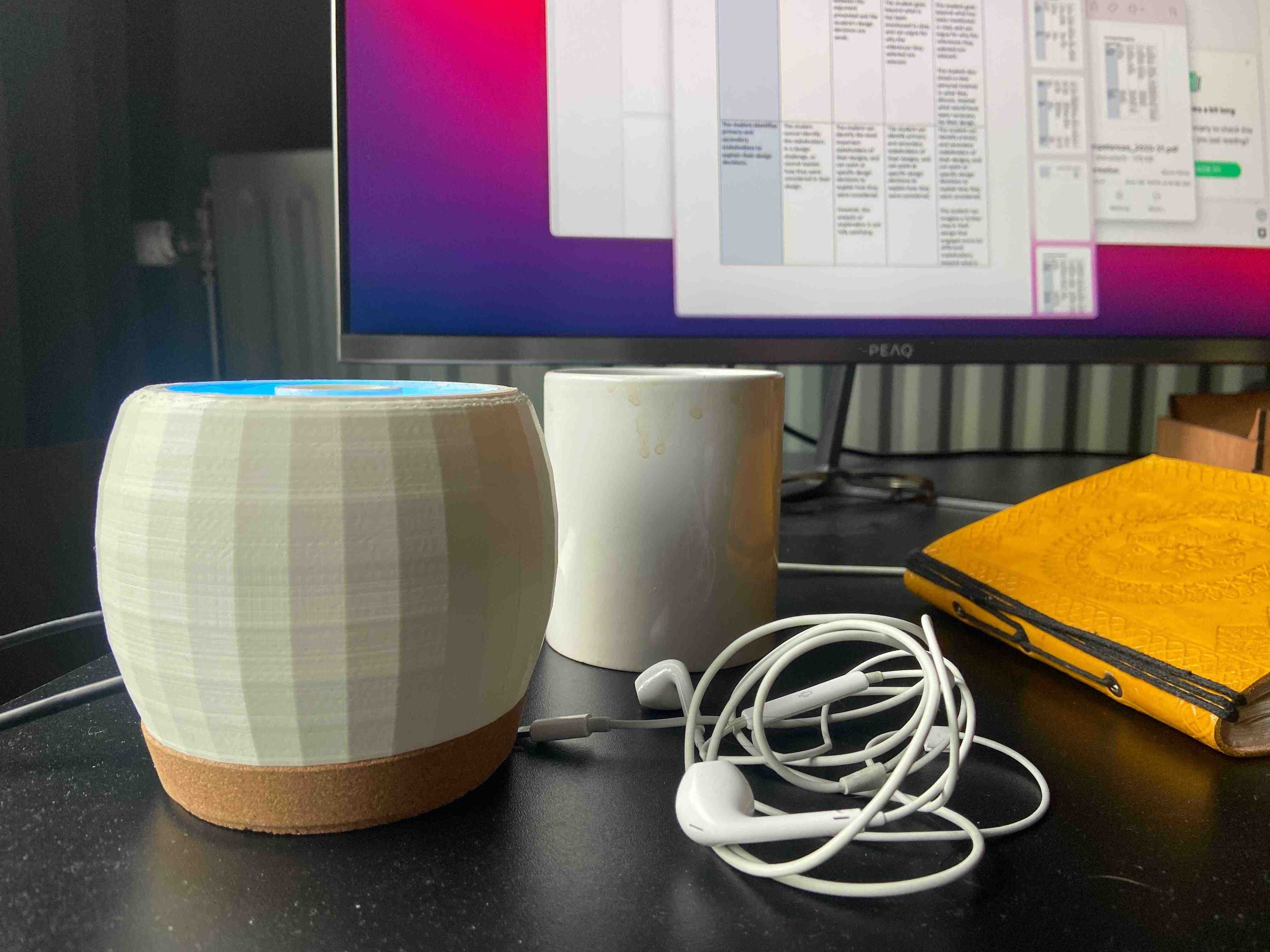
All illustrations by Lara van der Sluijs
